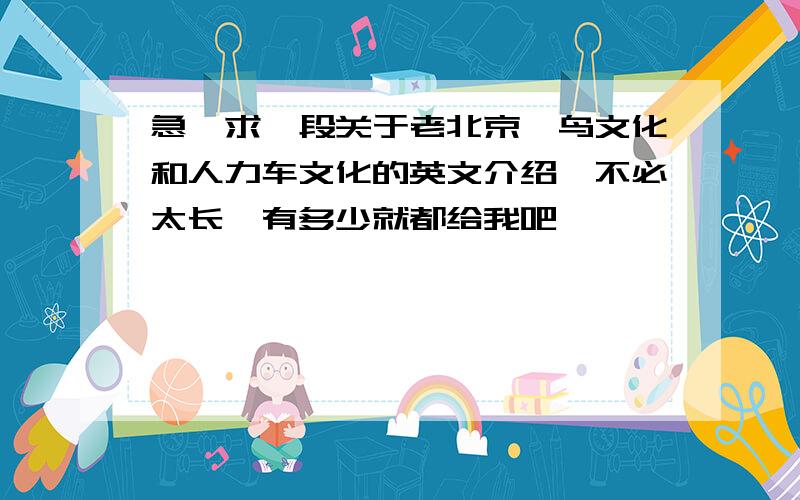急,求一段关于老北京遛鸟文化和人力车文化的英文介绍,不必太长,有多少就都给我吧,
来源:学生作业帮助网 编辑:作业帮 时间:2024/11/29 15:22:14

急,求一段关于老北京遛鸟文化和人力车文化的英文介绍,不必太长,有多少就都给我吧,
急,求一段关于老北京遛鸟文化和人力车文化的英文介绍,不必太长,有多少就都给我吧,
急,求一段关于老北京遛鸟文化和人力车文化的英文介绍,不必太长,有多少就都给我吧,
一下子弄不到遛鸟的,先来一个人力车的
Rickshaw transport was an important element in urban development in 20th century China, both in terms of its provision of transport to the consumers of the service and for the employment it provided (and migration it facilitated) for workers. Rickshaw Beijing: City, People, and Politics in the 1920 by David Strand quantifies the effect: "Sixty thousand men took as many as a half million fares a day in a city of slightly more than one million. Sociologist Li Jinghan estimated that one out of six males in the city between the ages of sixteen and fifty was a puller. Rickshaw men and their dependents made up almost 20 percent of Beijing's population." (p. 21)
Most manual rickshaws were eliminated in China after the founding of the People's Republic of China in 1949, because they were considered a symbol of oppression to working class.